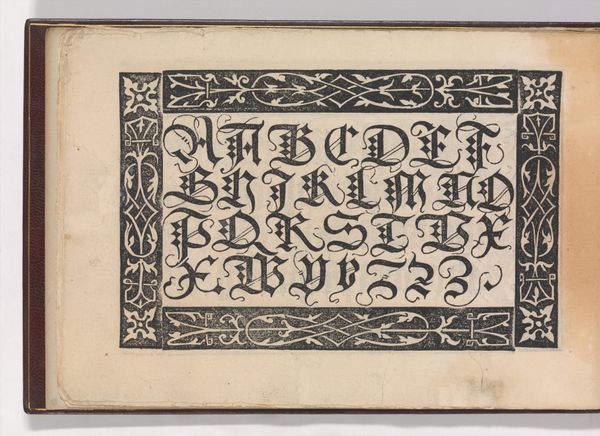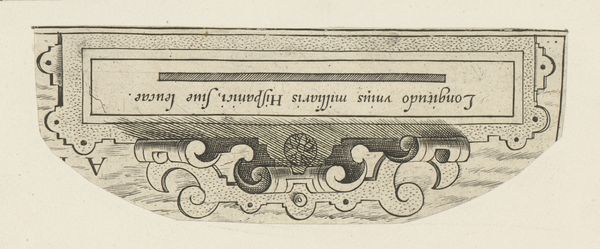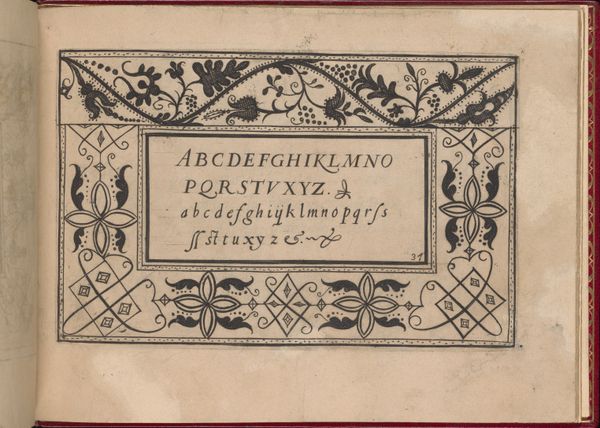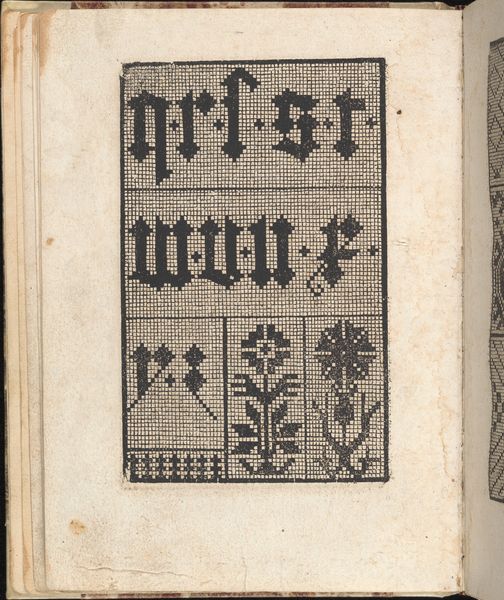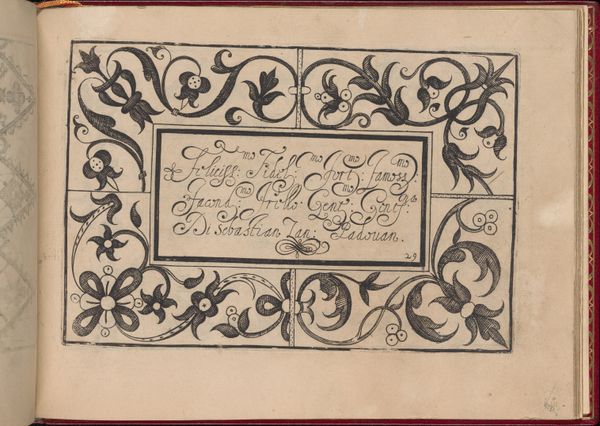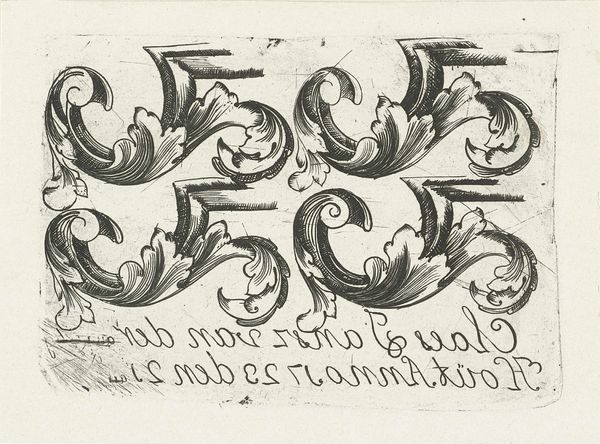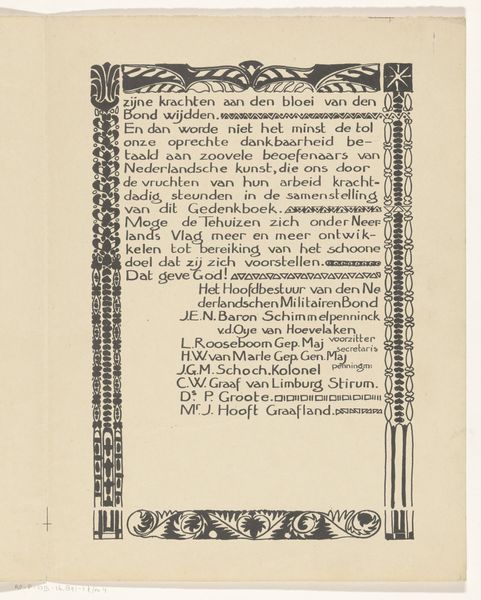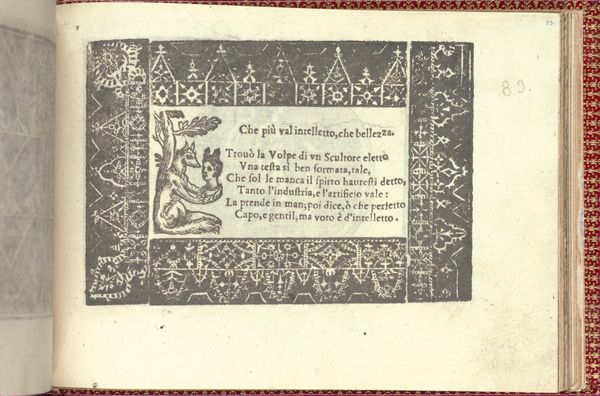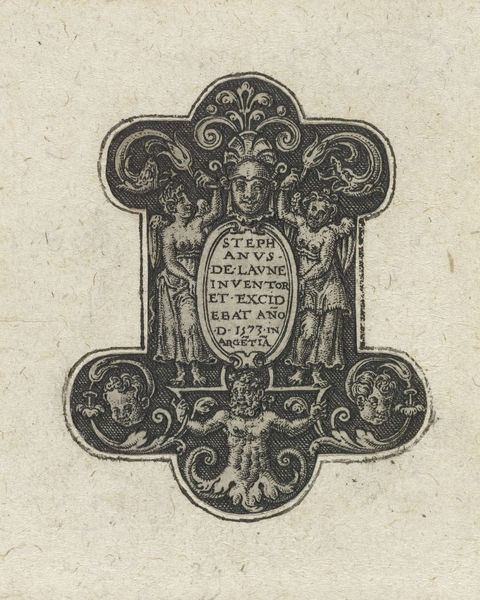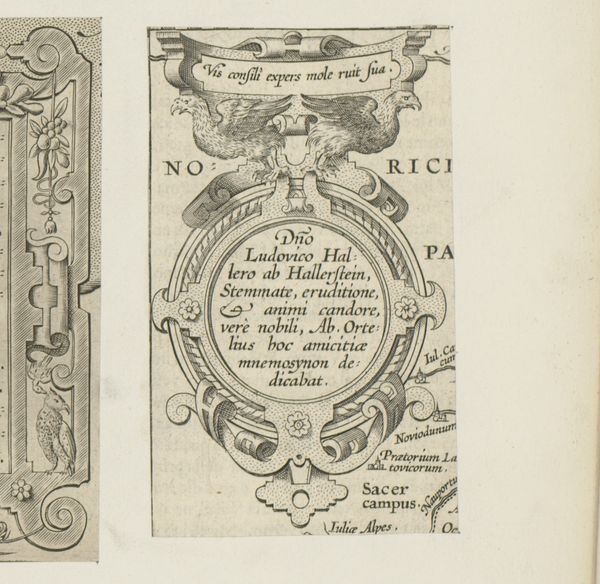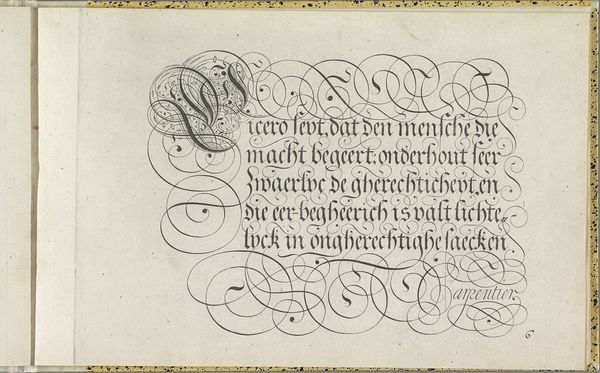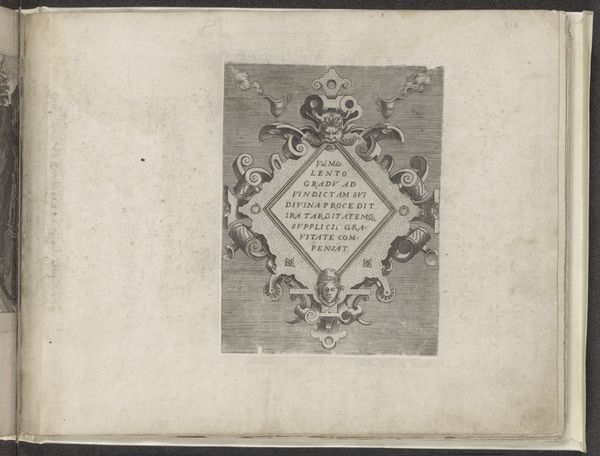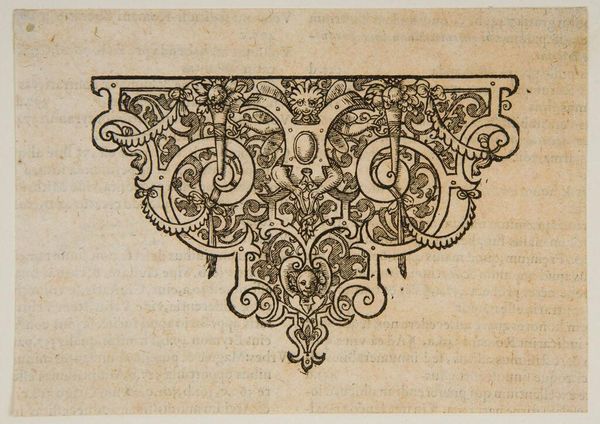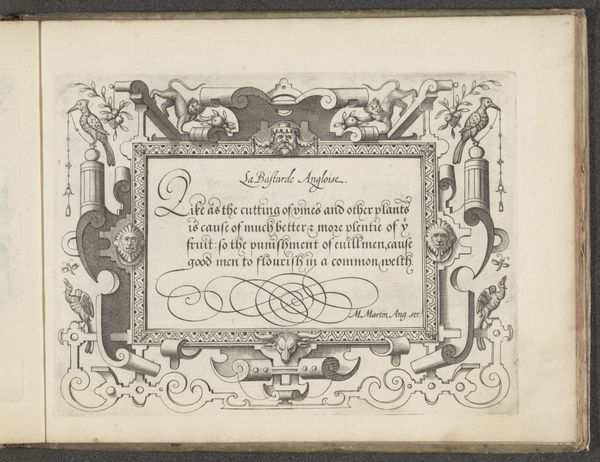
Ghirlanda: Di sei vaghi fiori scielti da piu famosi Giardini d'Italia, page 49 (recto) 1604
0:00
0:00
drawing, graphic-art, print, paper, ink, engraving
#
drawing
#
graphic-art
# print
#
paper
#
ink
#
italian-renaissance
#
engraving
#
calligraphy
Dimensions: Overall: 5 7/8 x 7 7/8 in. (15 x 20 cm)
Copyright: Public Domain
Editor: So, this is page 49 from "Ghirlanda: Di sei vaghi fiori scielti da piu famosi Giardini d'Italia," created by Pietro Paulo Tozzi in 1604. It's an engraving in ink on paper. It feels like such a formal, almost architectural rendering of the alphabet, a real demonstration of skill. What catches your eye about this page? Curator: Well, considering this as a product of labor, I'm struck by the process of its creation. Think about the engraving itself - the physical act of carving into the metal plate, the skill required to translate floral designs and calligraphy into repeatable marks. Then there's the paper; where did it come from? Who made it? How does its texture influence the final printed image? Editor: That’s interesting, I was so focused on the image, I didn't even think about the materials used! The paper does look quite textured now that you mention it. Curator: Exactly. And the context! This wasn't just art for art's sake. It’s a pattern book, intended to be used by artisans. So it highlights a breakdown of artistic boundaries. This book facilitated the flow of design between different craftsmen, from jewelers to embroiderers. Are these decorative borders "high art" or applied design? What do you think? Editor: I hadn’t considered that before. It blurs the lines between fine art and something more functional, or even commercial. So, instead of focusing on Tozzi as a lone artistic genius, you're more interested in understanding the social and economic factors involved in the production and consumption of this image. Curator: Precisely. We must look at the methods of production and reception to grasp its historical significance fully. Editor: That definitely gives me a new way of looking at this piece and early printmaking. Curator: And, in turn, we acknowledge all the craftspeople whose labor created what we now consider a fine art object.
Comments
No comments
Be the first to comment and join the conversation on the ultimate creative platform.
